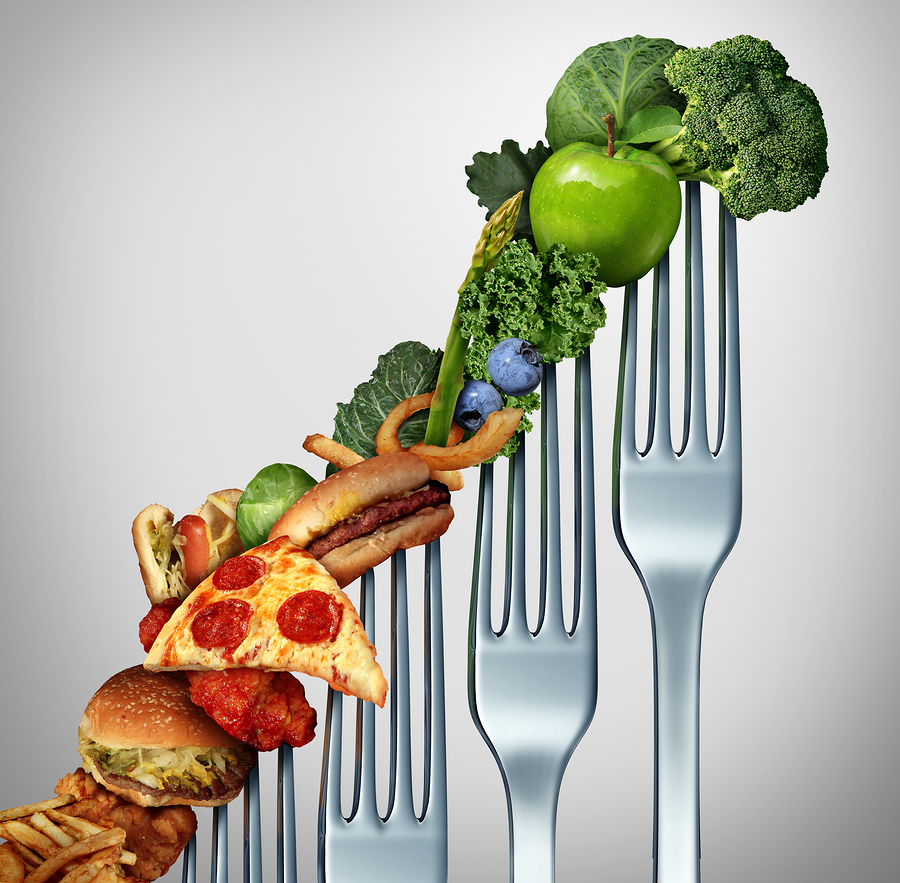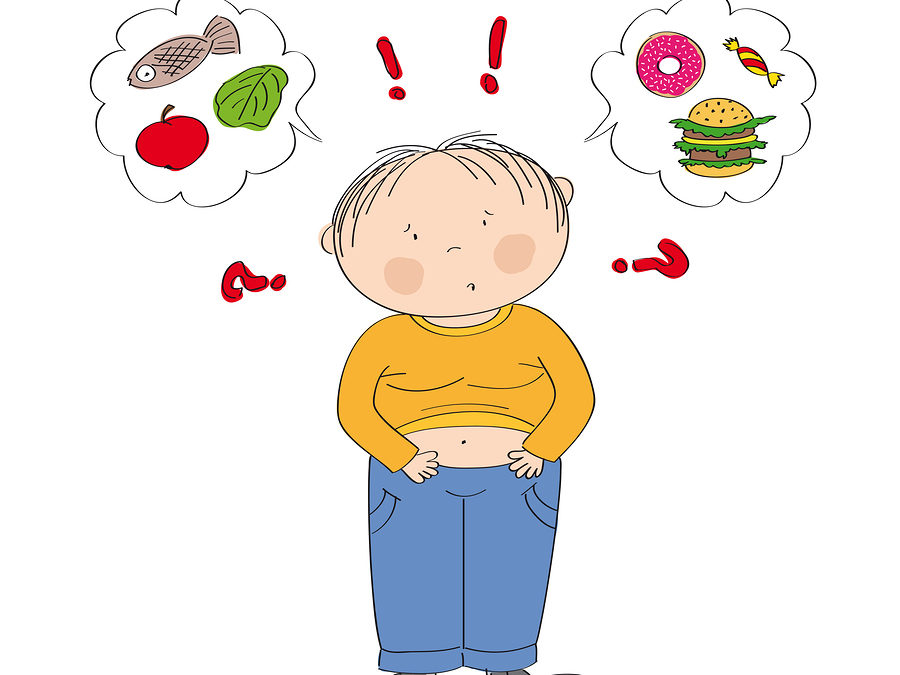With one in three American kids and teens being overweight or obese, childhood obesity is the No. 1 health concern among parents in the United States. In the past 40 years the percentage of childhood obesity increased from about 4% to 20% and more. That’s an overall increase of more than 500%.
Excess weight in children is causing a broad range of possible health problems, which in many cases aren’t shown until adulthood. Those problems could be high blood pressure, high cholesterol, type 2 diabetes, heart disease and even cancer. Obese children are more likely to suffer from psychological problems, such as anxiety and depression, low self-esteem as well as social problems.
What is the cause of that? Well, you could blame it on the food as well as our overall lifestyle. 40 years ago food in general had a higher nutritional value than today. It was not mass-produced and it didn’t have as many additives and modifications as it has today. Kids were more active and didn’t spend too much time inside the house. Today we live in an abundance of food on every corner; with fast-food commercials everywhere we look. Children spend a lot more time at home, in front of the TV or the computer and are not being active, nor socially or physically.

Unless you spend a lot of money on “organic” food or you only shop at farmers markets, you cannot really control where your food comes from. But there are still a lot of things you can do to maintain a healthy lifestyle. As much as it is important what you eat it is as important how or when you eat it.
The FOOD
Do some food research. The Internet is full of information and in a short period of time you can create a list of healthy food items that you like (or never knew before). Create sections for breakfast, lunch, dinner as well as healthy snacks. By doing that you eliminate unhealthy food items in your house and you make room for fresh ideas. That might seem like a lot of work at first, but it will get easier as you keep doing it. Do it together as a family.
More fun planning together = more fun eating together.
Take the time to read the ingredient labels. Make sure you check on sodium, saturated fat and most importantly sugar levels to get a better idea as to what you are serving. It is good to keep an eye on fat and to include low-fat or non-fat dairy products in your daily food prep, but please be aware that low-fat or fat-free items are not necessarily healthier. They often contain a lot of added sugar and other unhealthy ingredients, which makes them high in calories.

When it comes to weight gain sugar is the ultimate enemy. Stay away from white sugar if possible. If you need to sweeten then use honey or agave. Both are sweeter than sugar, therefore you need less, and they don’t spike up your blood-sugar level. Two other “good sugars” are coconut sugar and raw cane sugar. Avoid sugar substitutes.
Skip drinking soda. Studies have shown that only one or two (regular) sodas per day can increase the risks of diabetes and heart attack by 20% as well as an increase of being overweight by about 30%. Diet sodas don’t directly affect weight gain, but the artificial sweeteners can boost your appetite and you will subconsciously eat more.
Include plenty of (fresh) fruits and vegetables in your daily meal planning.
Change bad food for good food – examples: Choose brown rice over white rice or whole-wheat (grain) bread over white flour bread. Whole-grain foods contain more fiber, which is helpful for weight loss. Choose avocado as a spread on your bread instead of mayonnaise. Swap out soda and fruity drinks with plain water. This will lower your sugar intake by 100%. And if you miss the soda bubbles you can always get flavored sparkling waters.
Provide plenty of protein by serving lean meats, poultry, fish, lentils, and beans.
The LIFESTYLE
Many people think that living healthy requires a lot of time and effort, but with only a few changes you can flip your lifestyle around and lose or maintain a healthy weight and even save money.
Here are a few tips:

Drink enough water. During the night we don’t hydrate our bodies so we wake up dehydrated. A glass of water in the morning right after you wake up stabilizes your hydration level and fills your stomach so you don’t need a large breakfast. Drinking enough water throughout the day will not only keep you hydrated, it will also reduce your hunger and you will eat less.
Keep an eye on your food when eating out. We have all been there – you have a busy day and you end up at a fast-food place. That’s ok. But while you are there choose the better meal option. Pick the grilled chicken over the fried one or choose a simple hamburger over the triple bacon cheeseburger. We all like large potions and great deals, but please be aware that a supersize combo meal at a fast-food restaurant can have up to 2000 (empty) calories, which is more than an active child burns during an entire day. Eating out in restaurants can be difficult, because you don’t know what goes into your food and how it is prepared. Many restaurants start you off with unlimited bread sticks or tortilla chips prior to your meal to get you full while you wait for your entrée. Even though these treats are delicious and free of charge you pay with unnecessary carbs and hundreds of empty calories.

Preparing your meals at home is a lot cheaper and you can control how your food is prepared. Try to have 3 meals in a day with maybe a small snack in between. This will keep your metabolism active. Skipping a meal (for weight loss) drops your energy, slows down your metabolism and boosts your appetite, which can increase the chance of overeating the next meal.
Controlling the portion size is very important. The bigger the plates are the more food will get piled up on them, which is an immediate calorie increase. Additionally it is helpful to plate your dinner in the kitchen instead of having big platters on the table. It is easier to resist going for seconds if there is no food on the table.
Get some family time in. Studies have shown that talking to family members will slow you down and you eat less. After you eat do the dishes together instead of watching TV. Remember, any little task that you do in or around the house burns calories. Occupying yourself with just anything is a great way to stay away from uncontrolled eating and snacking.
Don’t eat too late. Even though the digestive system of our bodies will continue working as we go to sleep, high calorie meals right before bedtime can make you feel full and give you heartburn, causing you to have a restless night’s sleep. If it gets too late you might just want to serve a snack instead of a full dinner. Some crackers with cheese or an apple with peanut butter might just be enough to prepare for bed.
To help your child maintain a healthy weight, balance the calories your child consumes throughout the day with the calories your child uses through physical activity and normal growth.
Remember that small changes every day can lead to a recipe for success.








Recent Comments